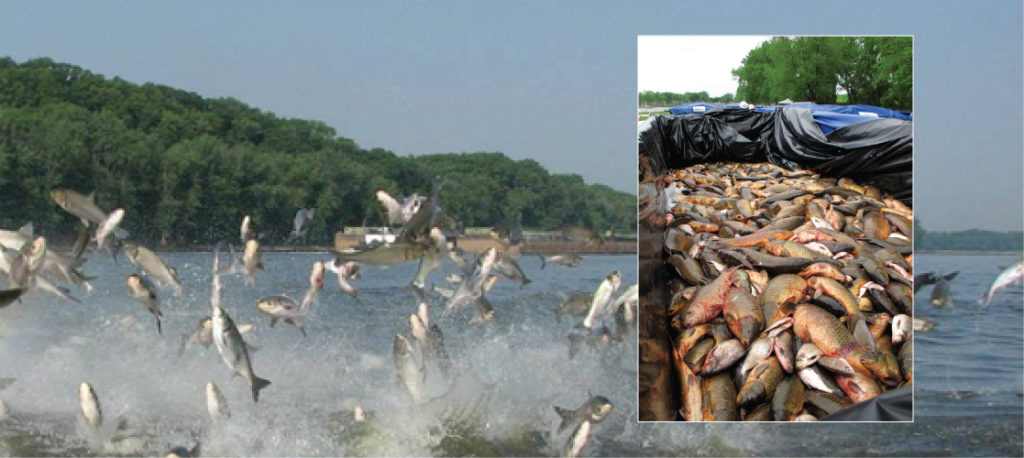Discuss the scope and study of population ecology
Imagine sailing down a river in a small motorboat on a weekend afternoon; the water is smooth and you are enjoying the warm sunshine and cool breeze when suddenly you are hit in the head by a 20-pound silver carp. This is a risk now on many rivers and canal systems in Illinois and Missouri because of the presence of Asian carp.

Figure 1. Asian carp jump out of the water in response to electrofishing. The Asian carp in the inset photograph were harvested from the Little Calumet River in Illinois in May, 2010, using rotenone, a toxin often used as an insecticide, in an effort to learn more about the population of the species. (credit main image: modification of work by USGS; credit inset: modification of work by Lt. David French, USCG)
This fish—actually a group of species including the silver, black, grass, and big head carp—has been farmed and eaten in China for over 1000 years. It is one of the most important aquaculture food resources worldwide. In the United States, however, Asian carp is considered a dangerous invasive species that disrupts community structure and composition to the point of threatening native species.
What You’ll Learn to Do
- Describe how ecologists measure population size and density
- Identify methods used to study population changes over time
- Describe how life history patterns are influenced by natural selection
- Explain the characteristics of and differences between exponential and logistic growth patterns
- Compare and contrast density-dependent growth regulation and density-independent growth regulation
- Compare and contrast K-selected and r-selected Species
- Discuss how the human population has changed over time
Learning Activities
The learning activities for this section include the following:
- Population Demography
- Life Histories and Natural Selection
- Environmental Limits to Population Growth
- Population Dynamics and Regulation
- Human Population Growth
- Self Check: Population Ecology
Candela Citations
- Introduction to Population Ecology. Authored by: Shelli Carter and Lumen Learning. Provided by: Lumen Learning. License: CC BY: Attribution
- Biology 2e. Provided by: OpenStax. Located at: http://cnx.org/contents/185cbf87-c72e-48f5-b51e-f14f21b5eabd@10.8. License: CC BY: Attribution. License Terms: Access for free at https://openstax.org/books/biology-2e/pages/1-introduction
